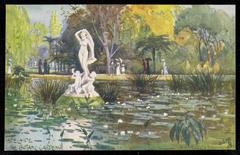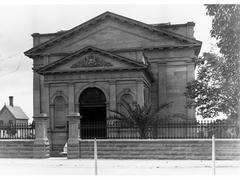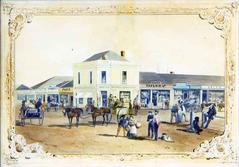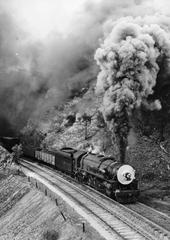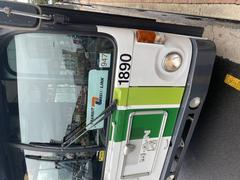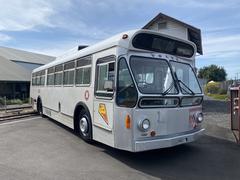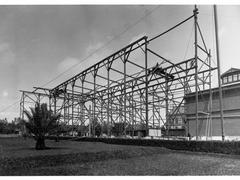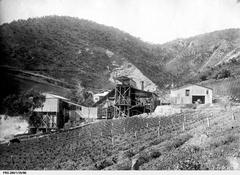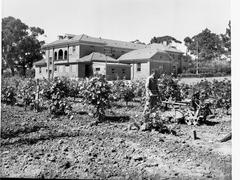Three Rivers Fountain, Adelaide: Visiting Hours, Tickets, and Travel Guide
Date: 03/07/2025
Introduction
Located at the heart of Adelaide’s city centre in Victoria Square/Tarntanyangga, the Three Rivers Fountain stands as an iconic testament to the city’s artistry, history, and cultural diversity. Designed by esteemed South Australian sculptor John Dowie and unveiled in 1968, the fountain commemorates Queen Elizabeth II’s 1963 visit and celebrates the city’s three essential waterways—the Murray, Torrens, and Onkaparinga Rivers. Beyond its aesthetic appeal, the fountain is a profound symbol of Adelaide’s layered past, reflecting both the city’s visionary urban planning and the enduring heritage of the Kaurna people, the traditional custodians of the land.
This guide synthesizes detailed research and authoritative sources to provide everything you need to plan a memorable visit. You’ll find essential information on visiting hours, accessibility, tickets, nearby attractions, cultural significance, and practical tips to enhance your experience (Victoria Square Adelaide; City of Adelaide).
Table of Contents
- Introduction
- History and Cultural Significance
- Visiting Information
- Visitor Experience
- Nearby Attractions
- Practical Tips and Recommendations
- Frequently Asked Questions (FAQ)
- Summary and Call to Action
- References
History and Cultural Significance
Early Urban Planning and Kaurna Heritage
Victoria Square, or Tarntanyangga in the Kaurna language (“The Dreaming Place of the Red Kangaroo”), lies at the heart of Adelaide’s city grid. Conceived in 1837 by Colonel William Light, South Australia’s first Surveyor General, the square was designed as Adelaide’s civic centre and has been a focal point for public gatherings and cultural recognition (Wikipedia).
Long before European settlement, this area held immense cultural importance for the Kaurna people. In 2002, the City of Adelaide formally adopted the dual name Victoria Square/Tarntanyangga to acknowledge this heritage and support reconciliation efforts. The square remains a significant site for Aboriginal events, including the first raising of the Aboriginal flag in 1971 (NDT.net).
Foundation and Artistic Details of the Fountain
The Three Rivers Fountain was commissioned to commemorate Queen Elizabeth II’s visit in 1963. Sculpted by John Dowie, the fountain was inaugurated by the Duke of Edinburgh in 1968. Its design pays tribute to the Murray, Torrens, and Onkaparinga Rivers—each represented by a unique sculptural figure:
- Murray River: An Aboriginal man with an ibis
- Torrens River: A woman with a black swan
- Onkaparinga River: A woman with a heron
Dowie’s innovative use of bronze and concrete, combined with symbolic animal companions, reflects both modernist aesthetics and deep-rooted cultural narratives (City of Adelaide; SA History Hub). The central crown motif recalls the royal visit, while the rivers’ representations honor their ecological and cultural significance for both Indigenous and settler communities.
Heritage Status and Restoration
The fountain was originally positioned at the northern end of Victoria Square but was relocated to the southern end during urban redevelopment in 2014. It was heritage-listed in 2012 for its artistic merit and historical value. Regular maintenance and a major restoration in 2013—including structural repairs and upgraded lighting—have preserved the fountain’s condition and enhanced its nighttime appearance (Experience Adelaide).
Visiting Information
Hours and Tickets
- Opening Hours: Victoria Square and the Three Rivers Fountain are accessible 24 hours a day, 7 days a week. For the best experience, visit between 7:00 AM and 9:00 PM for optimal lighting and safety (Trip.com).
- Tickets: There is no entry fee or ticket required; the fountain is free to visit at any time.
Accessibility
- Wheelchair Access: The area is flat, paved, and accessible for wheelchairs, strollers, and mobility aids.
- Facilities: Seating, shaded areas, and accessible public toilets are available nearby.
Getting There
- By Tram: The free city tram stops at Victoria Square; the fountain is a short walk from the tram stop.
- By Bus: Multiple city bus routes stop at or near Victoria Square.
- By Foot: The location is within walking distance from major city attractions and accommodations.
- By Bicycle: Bike racks are available in the square; Adelaide’s city centre is bike-friendly.
Tours and Events
- Guided Walking Tours: Many local tours include Victoria Square and the fountain. Check with Adelaide Guided Tours and the City of Adelaide events calendar for schedules.
- Cultural Events: The square is a hub for festivals, rallies, and cultural celebrations, including NAIDOC Week, the Adelaide Fringe, and other significant community gatherings (Adelaide Festival).
Visitor Experience
Atmosphere and Activities
The fountain offers a tranquil oasis in the city, with the sound of cascading water and surrounding greenery creating a relaxing atmosphere. It is popular among families, solo visitors, photographers, and those attending nearby events. During festivals or markets, the area becomes vibrant and lively.
Photography Tips
- Golden Hours: Early morning and late afternoon provide the best natural lighting for photos.
- Night Visits: The fountain is illuminated at night, offering striking photo opportunities.
- Angles: Capture the distinct river figures and native birds from different perspectives for dynamic compositions.
Community Role
The Three Rivers Fountain is more than an artwork—it is a gathering place central to Adelaide’s civic life and multicultural identity. The inclusion of an Aboriginal figure acknowledges Kaurna heritage, while its prominence in public celebrations and events reinforces its ongoing social importance.
Nearby Attractions
Explore these highlights within walking distance of the fountain:
- Adelaide Central Market: Renowned for fresh produce and diverse cuisine.
- Gouger Street: International dining and cafes.
- Rundle Mall: Main shopping precinct with public art and street performances.
- St. Francis Xavier’s Cathedral: Impressive Gothic Revival architecture.
- Reconciliation Plaza: Featuring the Australian and Aboriginal flags, symbolizing the city’s commitment to cultural respect.
- Adelaide Botanic Garden: A short tram ride away, offering lush landscapes and peaceful walks.
(Nomadasaurus; Adelaide City Tour)
Practical Tips and Recommendations
- What to Bring: Camera, picnic supplies, water bottle, sunscreen, and a hat.
- Best Times to Visit: Weekdays for a quieter experience; weekends for a lively atmosphere.
- Facilities: Free public Wi-Fi, nearby restrooms, and ample seating.
- Safety: The square is well-lit and regularly patrolled, but always remain aware of your surroundings.
- Etiquette: Supervise children near water features, do not climb on sculptures, and respect the site’s Indigenous and historical significance.
Frequently Asked Questions (FAQ)
Q: What are the visiting hours for the Three Rivers Fountain?
A: The fountain is accessible 24/7, year-round.
Q: Is there a ticket or entry fee?
A: No, the fountain and Victoria Square are free to visit.
Q: Is the area wheelchair accessible?
A: Yes, all paths and facilities are accessible for wheelchairs and strollers.
Q: Are guided tours available?
A: Yes, many city walking tours include the fountain; check with local tour providers for details.
Q: Can I picnic at the site?
A: Yes, the lawns and gardens around the fountain are ideal for picnics.
Q: Are there public toilets nearby?
A: Accessible public restrooms are located within Victoria Square.
Summary and Call to Action
The Three Rivers Fountain in Victoria Square/Tarntanyangga is an essential Adelaide landmark, harmoniously blending history, art, and cultural identity. As a tribute to the Murray, Torrens, and Onkaparinga Rivers, the fountain stands as a symbol of the city’s environmental sustainability and its commitment to honoring both its colonial and Indigenous heritage. Free, accessible, and centrally located, it offers a rewarding experience for all visitors.
Enhance your visit by exploring nearby attractions, participating in local events, and engaging with the site’s rich cultural context. For current updates, guided tours, and event listings, download the Audiala app and consult the official Adelaide City Council and tourism websites.
Plan your visit and discover the heart of Adelaide’s history and community!
